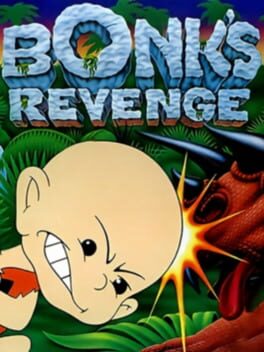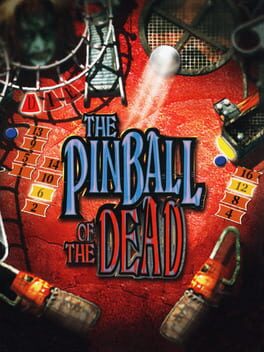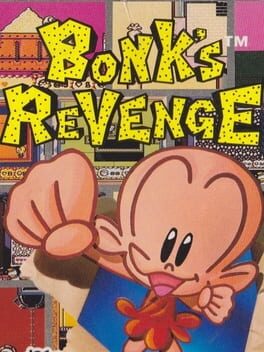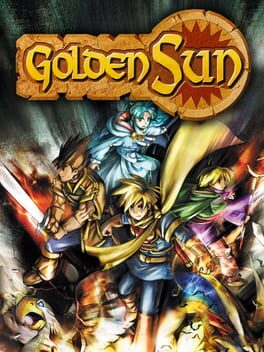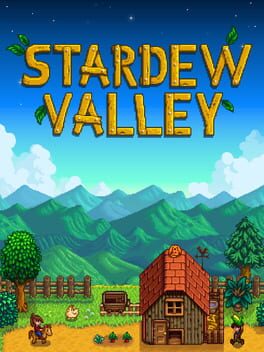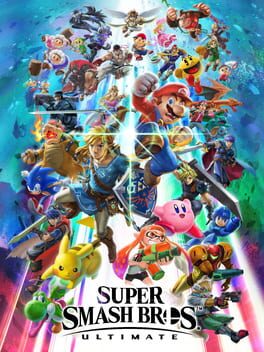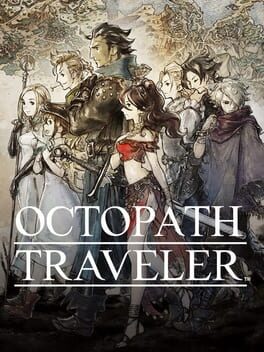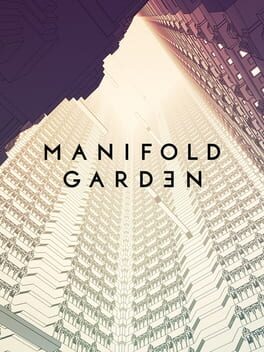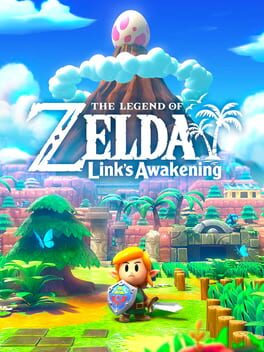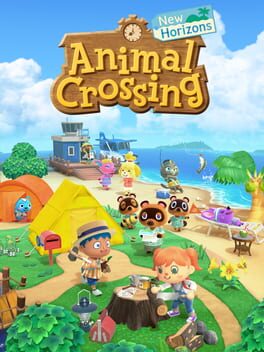parosilience
I played and beat this game when I was nine years old. It might be the most impressive feat of my childhood gaming time, since I needed a good amount of rewind and slowdown (adoringly programmed here by capcom on the triggers) to get through it at 40.
It’s a tough as nails shooter with a lot of repetition and not all that much charm. This is a shooter that’s all about your own movements, which feel so satisfyingly snappy it almost ruins other shmups.
It’s a tough as nails shooter with a lot of repetition and not all that much charm. This is a shooter that’s all about your own movements, which feel so satisfyingly snappy it almost ruins other shmups.
2009
1991
# Childhood nostalgia
Not everyone has a childhood video game, but it’s common enough trait for those of us who grew up after the 80s that it’s become a cultural cliché. Bonk’s Revenge was mine. I owned the original and this sequel, but Revenge imprinted on me, probably due to it being a little easier to control and delivering a much brighter colour palette.
Bonk is a Mario-like platformer positioned in the same was Mario was: a mascot to make this video game system something a kid would want their parents to buy. You traverse to the right, finish levels, find power-ups, defeat enemies and bosses, and eventually save[1] a princess.
It’s fun, pretty breezy for most of it, colourful, kid-friendly, and memorable. It takes the average player two hours to beat it. Much like the TurboGrafx 16, it’s barely remembered. I think there’s a reason for that beyond bad marketing, though.
# Controls
With most mascot platformers, there’s a proper noun, and a verb. Mario jumps. Sonic spins. With Bonk, the character and the action are not two things. Bonk bonks.
The instruction book calls this action a headbutt. But, dear reader, please understand: it is a bonk. The game, in at least one mini-game, instructs you to defeat enemies by bonking. This is the correct word.
In Bonk games, there’s two actions. You can jump, and you can bonk. Pressing the bonk button while just standing there makes Bonk bonk. If there’s an enemy right in front of him, they’ll die. That’s simple enough. Hit the jump button, then hit the bonk button, and Bonk dives in the direction you push the controller. Now you’re using both hands, setting up and guiding an attack.
Hit the bonk button once in the air, and Bonk dives head-first into anything you point him at. If it’s an enemy, they usually die. But when they die, Bonk ricochets off the enemy, gaining height. You determine the direction Bonk ricochets by determining his initial direction. It works really well and feels really good, but this takes time to get used to.
But the TurboGrafx 16 controller didn’t just have buttons. It also had switches. There were two buttons and two switches, and the switches had three notches each. In the instruction book, it says “Experiment with the turbo switches. Different settings will help you out at different points in the game.” This is pretty obtuse! This is not a design people are just going to get.
If the switch is flicked down, the button will press once. If the switch is flicked to the middle, the button will press repeatedly about as fast as a human and repeatedly press the button. If the switch is flicked all the way up, the button will press repeatedly faster than most humans can repeatedly press a button.
Most of the time you need the switch flicked all the way down so pressing the bonk button while midair makes Bonk dive. If you jump at a wall and hit the bonk button, Bonk performs a wall jump. There’s a lot of goodies and secret stages seemingly just out of reach, so you’ve got to get good at these ricochet moves pretty early.
But sometimes you need the switch flicked all the way up, so holding the bonk button hold down the Bonk button. If you’re in midair, Bonk will spin. Spinning in turbo mode makes him spin a lot faster and, with enough inertia, can go farther. But you have to be careful here, because this spin isn’t like, say, Sonic’s. You’re really vulnerable to enemies, because only the head part of your sprite will hit them. With some bosses, there’s a solid method of quickly spinning around their weak points, but you’ll also be taking damage.
I think this level of finicky precision probably turned a lot of people off Bonk even during the TurboGrafx run. It just doesn’t feel as intuitive as a Mario or Sonic game. But I bet it turned off even more people later, when trying to emulate the game using other controllers.
# Emulation
The TurboGrafx/PC Engine has been something you could emulate for a long time. Officially, you could buy TG-16 games on the Wii in 2007. Before that, I saw emulators on pc and in the browser running pretty well. Getting the games to play didn’t seem to be the hard part; it was getting the controls to feel right.
On the Wii, if you played Bonk, there were two buttons that acted normally, and two buttons that acted as if the switch was flicked all the way up. This was okay, but it neglected the middle switch option. It seems like, if you want to buy a good TG-16 controller these days, this four-button scheme seems to be the norm. It’s never felt totally right for me.
With this play-through of Bonk’s Revenge, I created a control scheme in Retroarch that works like this: I had the jump button and bonk button set to the A and B buttons on my 3DS. The Y button became the “turbo” button, and I would hold down the bonk and turbo buttons at the same time in order to spin continuously. This felt natural enough, but even here I found a limitation: the “rapid fire” setting in Retroarch only gave me the “middle switch” amount of rapid fire for a TG-16 controller. I could never actually reach full spin speed with the bonk button.
It was enough to beat the game because Bonk is not a hard game, but I couldn’t 100% it because of this. I don’t think it would fly with other TG-16 games that require the switch flicked all the way up. For that, I’d probably invest in the 8-bit do controller.
# Difficulty
The game asks you if you want easy, medium, or hard. The difficulty isn’t communicated by number of enemies or how much damage Bonk can take, but by how many levels you want to play. I like this approach. Maybe you’ve only got half an hour and want to see a game to completion. Bonk’s got you. Maybe you only want to play through the fun easy first few levels that are absolutely stuffed with 1-ups and heart pieces, smiley faces, and mini games.
At first you don’t see the point to all these mini games. Why am I collecting these little smiley faces everywhere? But you get it after you defeat the first boss. Bonk rides a little elevator, and it goes higher based on the number of smiley faces you collect. Every 10 smileys gets you one level higher, and you ride a cute little train full of cheerleading animals that refill your hearts or give you 1-ups.
Collect 50 smiley faces, and the princess warps you past a whole world.
I like this approach. The easier levels at the beginning are so full of opportunities to collect 1-ups and extra heart pieces (you begin with three and collect up to eight, and you keep them after death, like Zelda) to equip you for getting through the tougher levels later.
A great player could probably skip all the mini-games in the first few worlds and breeze through the end-game, especially if they’re good at switch management.
# Fun
The word “Bonk” is so fun to say that someone made a social network[2] where it’s the only word available.
Bonk’s Revenge is a fun action platformer. There’s enough going on in each world that you feel you’re getting a lot out of it, and its short runtime means there’s no filler. The game never runs out of ideas and rarely repeats sections. I wish it was better known.
[1] In Bonk’s Adventure, the princess has been brainwashed into being one of the bosses and requires rescue. In Bonk’s Revenge, she assists you in the same and gives you a smooch at the end, but doesn’t seem to be in much peril herself.
[2] bonkbonkbonk.app
Screenshots: https://parosilience.tumblr.com/tagged/Bonk%27s%20Revenge
Not everyone has a childhood video game, but it’s common enough trait for those of us who grew up after the 80s that it’s become a cultural cliché. Bonk’s Revenge was mine. I owned the original and this sequel, but Revenge imprinted on me, probably due to it being a little easier to control and delivering a much brighter colour palette.
Bonk is a Mario-like platformer positioned in the same was Mario was: a mascot to make this video game system something a kid would want their parents to buy. You traverse to the right, finish levels, find power-ups, defeat enemies and bosses, and eventually save[1] a princess.
It’s fun, pretty breezy for most of it, colourful, kid-friendly, and memorable. It takes the average player two hours to beat it. Much like the TurboGrafx 16, it’s barely remembered. I think there’s a reason for that beyond bad marketing, though.
# Controls
With most mascot platformers, there’s a proper noun, and a verb. Mario jumps. Sonic spins. With Bonk, the character and the action are not two things. Bonk bonks.
The instruction book calls this action a headbutt. But, dear reader, please understand: it is a bonk. The game, in at least one mini-game, instructs you to defeat enemies by bonking. This is the correct word.
In Bonk games, there’s two actions. You can jump, and you can bonk. Pressing the bonk button while just standing there makes Bonk bonk. If there’s an enemy right in front of him, they’ll die. That’s simple enough. Hit the jump button, then hit the bonk button, and Bonk dives in the direction you push the controller. Now you’re using both hands, setting up and guiding an attack.
Hit the bonk button once in the air, and Bonk dives head-first into anything you point him at. If it’s an enemy, they usually die. But when they die, Bonk ricochets off the enemy, gaining height. You determine the direction Bonk ricochets by determining his initial direction. It works really well and feels really good, but this takes time to get used to.
But the TurboGrafx 16 controller didn’t just have buttons. It also had switches. There were two buttons and two switches, and the switches had three notches each. In the instruction book, it says “Experiment with the turbo switches. Different settings will help you out at different points in the game.” This is pretty obtuse! This is not a design people are just going to get.
If the switch is flicked down, the button will press once. If the switch is flicked to the middle, the button will press repeatedly about as fast as a human and repeatedly press the button. If the switch is flicked all the way up, the button will press repeatedly faster than most humans can repeatedly press a button.
Most of the time you need the switch flicked all the way down so pressing the bonk button while midair makes Bonk dive. If you jump at a wall and hit the bonk button, Bonk performs a wall jump. There’s a lot of goodies and secret stages seemingly just out of reach, so you’ve got to get good at these ricochet moves pretty early.
But sometimes you need the switch flicked all the way up, so holding the bonk button hold down the Bonk button. If you’re in midair, Bonk will spin. Spinning in turbo mode makes him spin a lot faster and, with enough inertia, can go farther. But you have to be careful here, because this spin isn’t like, say, Sonic’s. You’re really vulnerable to enemies, because only the head part of your sprite will hit them. With some bosses, there’s a solid method of quickly spinning around their weak points, but you’ll also be taking damage.
I think this level of finicky precision probably turned a lot of people off Bonk even during the TurboGrafx run. It just doesn’t feel as intuitive as a Mario or Sonic game. But I bet it turned off even more people later, when trying to emulate the game using other controllers.
# Emulation
The TurboGrafx/PC Engine has been something you could emulate for a long time. Officially, you could buy TG-16 games on the Wii in 2007. Before that, I saw emulators on pc and in the browser running pretty well. Getting the games to play didn’t seem to be the hard part; it was getting the controls to feel right.
On the Wii, if you played Bonk, there were two buttons that acted normally, and two buttons that acted as if the switch was flicked all the way up. This was okay, but it neglected the middle switch option. It seems like, if you want to buy a good TG-16 controller these days, this four-button scheme seems to be the norm. It’s never felt totally right for me.
With this play-through of Bonk’s Revenge, I created a control scheme in Retroarch that works like this: I had the jump button and bonk button set to the A and B buttons on my 3DS. The Y button became the “turbo” button, and I would hold down the bonk and turbo buttons at the same time in order to spin continuously. This felt natural enough, but even here I found a limitation: the “rapid fire” setting in Retroarch only gave me the “middle switch” amount of rapid fire for a TG-16 controller. I could never actually reach full spin speed with the bonk button.
It was enough to beat the game because Bonk is not a hard game, but I couldn’t 100% it because of this. I don’t think it would fly with other TG-16 games that require the switch flicked all the way up. For that, I’d probably invest in the 8-bit do controller.
# Difficulty
The game asks you if you want easy, medium, or hard. The difficulty isn’t communicated by number of enemies or how much damage Bonk can take, but by how many levels you want to play. I like this approach. Maybe you’ve only got half an hour and want to see a game to completion. Bonk’s got you. Maybe you only want to play through the fun easy first few levels that are absolutely stuffed with 1-ups and heart pieces, smiley faces, and mini games.
At first you don’t see the point to all these mini games. Why am I collecting these little smiley faces everywhere? But you get it after you defeat the first boss. Bonk rides a little elevator, and it goes higher based on the number of smiley faces you collect. Every 10 smileys gets you one level higher, and you ride a cute little train full of cheerleading animals that refill your hearts or give you 1-ups.
Collect 50 smiley faces, and the princess warps you past a whole world.
I like this approach. The easier levels at the beginning are so full of opportunities to collect 1-ups and extra heart pieces (you begin with three and collect up to eight, and you keep them after death, like Zelda) to equip you for getting through the tougher levels later.
A great player could probably skip all the mini-games in the first few worlds and breeze through the end-game, especially if they’re good at switch management.
# Fun
The word “Bonk” is so fun to say that someone made a social network[2] where it’s the only word available.
Bonk’s Revenge is a fun action platformer. There’s enough going on in each world that you feel you’re getting a lot out of it, and its short runtime means there’s no filler. The game never runs out of ideas and rarely repeats sections. I wish it was better known.
[1] In Bonk’s Adventure, the princess has been brainwashed into being one of the bosses and requires rescue. In Bonk’s Revenge, she assists you in the same and gives you a smooch at the end, but doesn’t seem to be in much peril herself.
[2] bonkbonkbonk.app
Screenshots: https://parosilience.tumblr.com/tagged/Bonk%27s%20Revenge
1994
The first Bonk’s Adventure on game boy is a pretty faithful port of the original. The level designs are simplified, but they’re spiritually similar enough. Bonk’s Revenge for game boy has nothing in common with the original Revenge. It’s a totally different design, and it’s far more bizarre.
It’s more difficult than Adventure, but still probably easier than any home version of Bonk. The power ups are totally new. When you eat meat 🍖 (this now happens every minute or so) you get to choose one of three power ups. The first makes you more powerful, and also makes you look like Venom. The second makes you a superhero; you jump higher and move faster. The third turns you into a burglar(!?), allowing you to open doors (with a Calvin-like grin).
The game is still a platformer, but these levels are more complicated and creative. This is aided by Bonk controlling smoother than previously. You can now cling to ceilings and floors along with walls, and the wall jump technique is easier to pull off. If I didn’t know better, Hudson started making a Spider-Man game here, then retrofitting the controls to Bonk.
This game contains a few fun bits of copyright infringement. There’s the Venom power up, the alien from Alien as a boss, and what seems to be a Robocop version of Bonk in special stages.
I grew up with the TG-16 Bonk games, but these game boy ports have been delightful surprises. They hold up as solid platformers, and the “grafx” remain first-rate.
Screenshots: https://parosilience.tumblr.com/tagged/Bonk%27s%20Revenge
It’s more difficult than Adventure, but still probably easier than any home version of Bonk. The power ups are totally new. When you eat meat 🍖 (this now happens every minute or so) you get to choose one of three power ups. The first makes you more powerful, and also makes you look like Venom. The second makes you a superhero; you jump higher and move faster. The third turns you into a burglar(!?), allowing you to open doors (with a Calvin-like grin).
The game is still a platformer, but these levels are more complicated and creative. This is aided by Bonk controlling smoother than previously. You can now cling to ceilings and floors along with walls, and the wall jump technique is easier to pull off. If I didn’t know better, Hudson started making a Spider-Man game here, then retrofitting the controls to Bonk.
This game contains a few fun bits of copyright infringement. There’s the Venom power up, the alien from Alien as a boss, and what seems to be a Robocop version of Bonk in special stages.
I grew up with the TG-16 Bonk games, but these game boy ports have been delightful surprises. They hold up as solid platformers, and the “grafx” remain first-rate.
Screenshots: https://parosilience.tumblr.com/tagged/Bonk%27s%20Revenge
1992
A port of a much more difficult and more rewarding game. However, it’s a very charming port, and likely the one I’d recommend for newer players, probably right after Kirby’s Dreamland.
Screenshots: https://parosilience.tumblr.com/tagged/Bonk%27s%20Adventure
Screenshots: https://parosilience.tumblr.com/tagged/Bonk%27s%20Adventure
2001
This review contains spoilers
Golden Sun starts with a tragedy. Before you even really know who you’re playing as, or what kind of game this is, you kind of only know two things: your village is under siege, and a bunch of people around you are casting magic spells to stop it. They do their best. Not everyone makes it.
The narrative cuts forward a few years, and you and your friends are sneaking into a forbidden temple on the edge of town because you’re RPG protagonists. Plot happens, and before you know it, you’re on the road trip with your buddies to save the world.
Golden Sun feels very standard, except you keep running into obvious puzzle choke points. There’s a puddle of water near a door. There’s a giant boulder in the way. People in the new town aren’t talking. This is when you realize you’re playing as a bunch of wizards in a world where most people are not wizards. It feels obvious to say “you use magic in the world because you’re a roaming gang of teenage wizards,” but most RPGs limit the applications of magic to battles. In Golden Sun, there’s a wizard power menu that works anywhere in the game. Other characters react to the fact that you have wizard powers and they don’t.
The best of these wizard powers feel like cheats, like “reveal”, which tells you where there’s hidden treasure alongside lighting your way in dark passages. “Mind read” adds another line of writing for nearly every character. It’s wild.
Golden Sun’s battle system is pretty simple if you’ve played one Final Fantasy and one Pokemon game, and it doesn’t matter which. Along the way, you collect little pocket monsters that give you more stuff to do in battles. The battles are fun enough, but it’s a 23-year-old game, so expect grinding and repetition.
The game borrows from Zelda here, by placing these little monsters just out of reach all over the place. It’s a clever bit of spatial design, and you’ll probably enjoy solving these puzzles.
The protagonists are pretty thin. They’re almost just the vehicle through which you play the game. You spend most of your time dealing with issues that come up in new towns. You show up, notice a problem, explore a dungeon, restore the town to normalcy, and move on. This isn’t bad. It feels episodic and classic. The game remembers its “A” plot just in time.
What gives this game its life, I think, are the tiny animations. The sprites bounce and stretch as they talk. The battles are over-animated for the GBA, with rotating cameras and insane effects. Watching a scene with a dozen sprites all bickering at one another becomes delightful thanks to these little moves and emojis.
I know it’s just a part 1 of a larger story, but Golden Sun holds up. I can see why so many people still speak so highly of it.
Screenshots: https://parosilience.tumblr.com/tagged/Golden%20Sun
The narrative cuts forward a few years, and you and your friends are sneaking into a forbidden temple on the edge of town because you’re RPG protagonists. Plot happens, and before you know it, you’re on the road trip with your buddies to save the world.
Golden Sun feels very standard, except you keep running into obvious puzzle choke points. There’s a puddle of water near a door. There’s a giant boulder in the way. People in the new town aren’t talking. This is when you realize you’re playing as a bunch of wizards in a world where most people are not wizards. It feels obvious to say “you use magic in the world because you’re a roaming gang of teenage wizards,” but most RPGs limit the applications of magic to battles. In Golden Sun, there’s a wizard power menu that works anywhere in the game. Other characters react to the fact that you have wizard powers and they don’t.
The best of these wizard powers feel like cheats, like “reveal”, which tells you where there’s hidden treasure alongside lighting your way in dark passages. “Mind read” adds another line of writing for nearly every character. It’s wild.
Golden Sun’s battle system is pretty simple if you’ve played one Final Fantasy and one Pokemon game, and it doesn’t matter which. Along the way, you collect little pocket monsters that give you more stuff to do in battles. The battles are fun enough, but it’s a 23-year-old game, so expect grinding and repetition.
The game borrows from Zelda here, by placing these little monsters just out of reach all over the place. It’s a clever bit of spatial design, and you’ll probably enjoy solving these puzzles.
The protagonists are pretty thin. They’re almost just the vehicle through which you play the game. You spend most of your time dealing with issues that come up in new towns. You show up, notice a problem, explore a dungeon, restore the town to normalcy, and move on. This isn’t bad. It feels episodic and classic. The game remembers its “A” plot just in time.
What gives this game its life, I think, are the tiny animations. The sprites bounce and stretch as they talk. The battles are over-animated for the GBA, with rotating cameras and insane effects. Watching a scene with a dozen sprites all bickering at one another becomes delightful thanks to these little moves and emojis.
I know it’s just a part 1 of a larger story, but Golden Sun holds up. I can see why so many people still speak so highly of it.
Screenshots: https://parosilience.tumblr.com/tagged/Golden%20Sun
1997
If you’re lucky like me, you’ll get to carry this heavyweight work in your heart for the rest of your life.
Screenshots: https://parosilience.tumblr.com/tagged/Final%20Fantasy%20VII
Screenshots: https://parosilience.tumblr.com/tagged/Final%20Fantasy%20VII
2016
This review contains spoilers
I’ve played more Stardew Valley than anything else. It obliterates the concept of a $15 game, because its deeper and more charming than everything else. Maybe Minecraft is deeper, who knows.
Stardew is easy enough to get into without realizing what you’re getting into, which is a bottomless pit of stuff. Its graphical simplicity is a lie for how complex things are underneath, proven by how many spreadsheets you’ll find online. And you will go online, because there’ll be one object in a quest you can’t find anywhere, so you’ll google it. And google will give you a spreadsheet of stuff you didn’t know the game even had. And then you need to get that stuff too.
If this sounds stressful, it really isn’t. Stardew is the cornerstone cozy game, actively lowering my heartrate every time I play it. I’ve been playing it on and off for three years now. It’s the game I play when I’m not playing other games. But when I get really into it, like I have been lately, no other game seems to do.
Stardew is easy enough to get into without realizing what you’re getting into, which is a bottomless pit of stuff. Its graphical simplicity is a lie for how complex things are underneath, proven by how many spreadsheets you’ll find online. And you will go online, because there’ll be one object in a quest you can’t find anywhere, so you’ll google it. And google will give you a spreadsheet of stuff you didn’t know the game even had. And then you need to get that stuff too.
If this sounds stressful, it really isn’t. Stardew is the cornerstone cozy game, actively lowering my heartrate every time I play it. I’ve been playing it on and off for three years now. It’s the game I play when I’m not playing other games. But when I get really into it, like I have been lately, no other game seems to do.
2018
The Nintendo Switch library, through a series of strange coincidences and historical dates, has become this love letter console to the entire history of video games. This is the console generation that gave us the first great Sonic game since 1993 in Sonic Mania. Ultra Street Fighter II and Street Fighter: 30th anniversary are both the best versions of those games. The Crash Bandicoot Trilogy is very good. And this is the console generation where Square Enix figured out how to make classic-looking and classic-playing RPGs feel fresh and beautiful.
They’re on a roll, too. They’re releasing the first 6 Final Fantasies with updated pixel art and music (and bad fonts) on PC and phones. But I think it all started with Octopath Traveler and its “HD-2D” look, which mixes hi-res pixel art with cool lighting effects. The battle system is addictive enough to make random battles fine, and most stories in this anthology are compelling.
They’re on a roll, too. They’re releasing the first 6 Final Fantasies with updated pixel art and music (and bad fonts) on PC and phones. But I think it all started with Octopath Traveler and its “HD-2D” look, which mixes hi-res pixel art with cool lighting effects. The battle system is addictive enough to make random battles fine, and most stories in this anthology are compelling.
2019
2019
Proof that Nintendo loves that Game Boy Zelda as much as you do.
Link’s Awakening holds a special place in so many people’s hearts. It’s cute and weird and also nightmarish in a childlike way that’s universally appealing? But it was released on the Game Boy, and even though you can buy it on 3DS, that’s kind of dead too, right? So Nintendo updated the graphics while changing little in terms of the actual gameplay, which is about as good as you can ask for. So it’s now just this classic 2D zelda but it looks like a stop motion cartoon from the 60s, and thank you to whoever at Nintendo pitched that.
Link’s Awakening holds a special place in so many people’s hearts. It’s cute and weird and also nightmarish in a childlike way that’s universally appealing? But it was released on the Game Boy, and even though you can buy it on 3DS, that’s kind of dead too, right? So Nintendo updated the graphics while changing little in terms of the actual gameplay, which is about as good as you can ask for. So it’s now just this classic 2D zelda but it looks like a stop motion cartoon from the 60s, and thank you to whoever at Nintendo pitched that.


